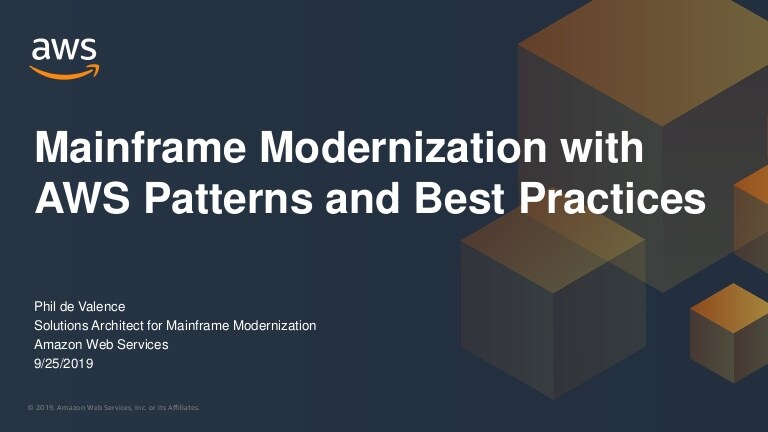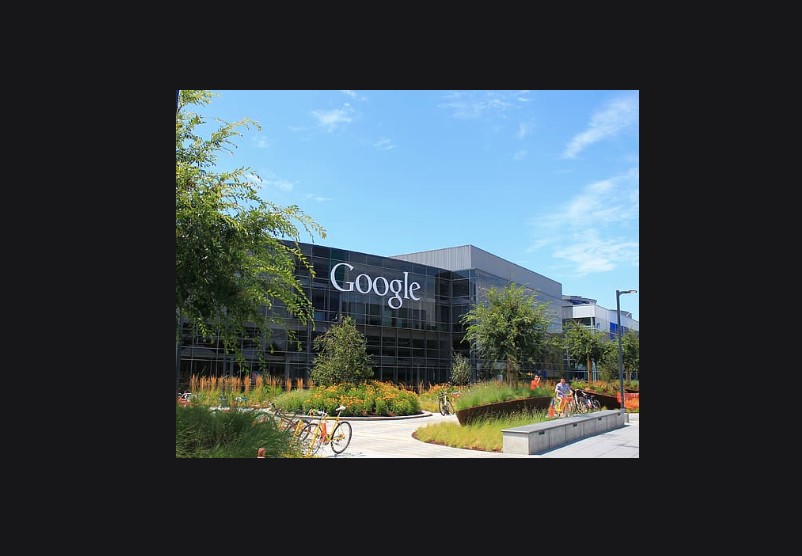AWS Mainframe Modernisation makes it faster and easier for customers to migrate mainframe and legacy workloads to the cloud and benefit from the superior agility, elasticity, and cost savings of AWS
Banco Inter, Accenture, and DXC Technology among customers and partners using AWS Mainframe Modernisation
Amazon Web Services, Inc. (AWS) announced AWS Mainframe Modernisation, a new service that makes it faster and easier for customers to migrate mainframe and legacy workloads to the cloud, and enjoy the superior agility, elasticity, and cost savings of AWS.
With AWS Mainframe Modernisation, customers can refactor their mainframe workloads to run on AWS by transforming legacy applications into modern Java-based cloud services.
Alternatively, customers can keep their applications as written and re-platform their workloads to AWS reusing existing code with minimal changes.
A runtime environment built into AWS Mainframe Modernisation provides the necessary compute, memory, and storage to run both refactored and replatformed applications and automatically handles the details of capacity provisioning, security, load balancing, auto-scaling, and application health monitoring.
AWS Mainframe Modernisation provides all the development, testing, and deployment tools necessary to automate the migration from mainframe and legacy environments to AWS. Customers and systems integrators (SIs) can use AWS Mainframe Modernisation to help enterprise migration teams assess and analyse migration readiness and plan migration projects.
There are no upfront costs for using AWS Mainframe Modernisation, and customers only pay for the amount of compute provisioned. To learn more about AWS Mainframe Modernisation, visit aws.amazon.com/mainframe-modernisation.
Under the best of circumstances, mainframe systems are complex, expensive, and difficult to scale. In today’s world, applications written for mainframe legacy systems also present significant operational challenges to customers compounded by the dwindling pool of engineers who specialise in these outdated technologies.
Many organisations want to migrate their legacy applications to the cloud, but to do so they need to go through a lengthy migration process that is made more challenging by the complexity of mainframe applications.
To migrate their mainframe workloads to AWS, organisations typically turn to SIs to lead modernisation and migration projects. Migrating mainframe workloads to the cloud requires multiple steps to discover, access, migrate, test, and operate the new workload environments.
Each step is complex and requires custom or third-party tooling that must be calibrated to each individual customer environment—before SIs can begin the intricate task of translating mainframe subsystems into cloud services. Aside from the migration itself, there is also the challenge of needing to configure, run, and operate these complex systems with modern application development and deployment best practices in the new cloud environments.
As more customers want to modernise their infrastructure and migrate off of complex legacy technologies, they could benefit from better tools that make it easier for them to move to the cloud.
AWS Mainframe Modernisation provides a complete development and runtime environment that makes it faster and easier for customers to migrate, modernise, and run their workloads on AWS. AWS Mainframe Modernisation integrates the tools needed for migrations into a single environment to create an end-to-end migration pipeline.
With AWS Mainframe Modernisation, customers can refactor their workloads written for mainframes in legacy programming languages (e.g. COBOL) to modern Java-based cloud services. Or, customers can keep their workloads as written and re-platform them to AWS with minimal code changes.
Whether customers choose to refactor or replatform their workloads, AWS Mainframe Modernisation provides a runtime environment for the migrated applications that includes all the benefits of a fully managed service and automatically handles capacity provisioning, security, load balancing, auto-scaling, and application health monitoring.
AWS Mainframe Modernisation also provides continuous integration and continuous delivery (CI/CD) capabilities to enable modern application development and deployment best practices, so customers can operate their modernised workloads in production on an ongoing basis with the superior agility, elasticity, and cost savings of AWS. AWS Mainframe Modernisation de-risks and accelerates the migration of mainframe and legacy workloads to AWS.
AWS General Manager of Migration Services William Platt said more and more customers are modernising their applications by moving them to the cloud to take advantage of the elasticity and agility of AWS and to reinvent customer experiences at a lower cost.
“But, for most enterprises, migrating their mainframe applications to the cloud is uncharted territory. With today’s launch of AWS Mainframe Modernisation, customers and systems integrators can now more quickly modernise their legacy mainframe workloads in a predictable way and get rid of much of the complexity and manual work involved in migrations,” said AWS General Manager of Migration Services William Platt.
William Platt said AWS Mainframe Modernisation provides automation in discovery, analysis, migration, and testing phases, and it gives customers and systems integrators a managed runtime environment to deploy their replatformed and refactored mainframe workloads for their customers, which makes modernising applications faster and easier.
AWS Mainframe Modernisation is available in preview today in US East (N. Virginia), US West (Oregon), Asia Pacific (Sydney), EU (Frankfurt), and South America (São Paulo) with availability in additional AWS Regions in the coming months.
Established in 1994, Banco Inter is the first fully digital bank in Brazil, which as of 2021 has served 15 million customers and expects to double its customer base within a few years. Its mission is to simplify banking and make it transparent and fair, with a one-stop shop that includes day-to-day banking, investments, credit card, insurance, loans, and even ecommerce.
Banco Inter S.A.Chief Technology Officer Guilherme Ximenes said the AWS Mainframe Modernisation replatforming toolchain is effective for migrating mainframe applications to AWS with substantial cost savings.
“By using the AWS Mainframe Modernisation managed runtime, we expect to simplify our card processor operations for enhanced resiliency and scalability. We are also excited by the DevOps CI/CD pipeline for increasing the agility we need to more quickly deliver new credit and debit card transaction capabilities to our customers,” said Guilherme Ximenes.
Accenture is a global professional services company with leading capabilities in digital, cloud, and security. “AWS Mainframe Modernisation helps to simplify moving and managing mainframe applications,” said Chris Wegmann, Global Technology and Practice Lead at Accenture’s AWS Business Group.
“The combination of AWS Mainframe Modernisation with Accenture’s extensive experience in mainframe application modernisation and managing mainframe applications now provides a way for clients to realise the agility, elasticity, and cost efficiency of AWS sooner,” said Chris Wegmann.
DXC Technology, a leading Fortune 500 global technology services company, provides mission-critical IT services that transform global businesses.
“DXC is excited to be leading mainframe legacy application transformation and modernisation, partnering with AWS on its AWS Mainframe Modernisation platform,” said Rick Sullivan, Vice President and General Manager of Applications at DXC Technology.
“DXC brings years of experience working with customers’ mainframe applications and modernisation. We look forward to leveraging the new capabilities that AWS Mainframe Modernisation will provide to complement our approach for enabling successful mainframe transformations on AWS,” said Rick Sullivan.





